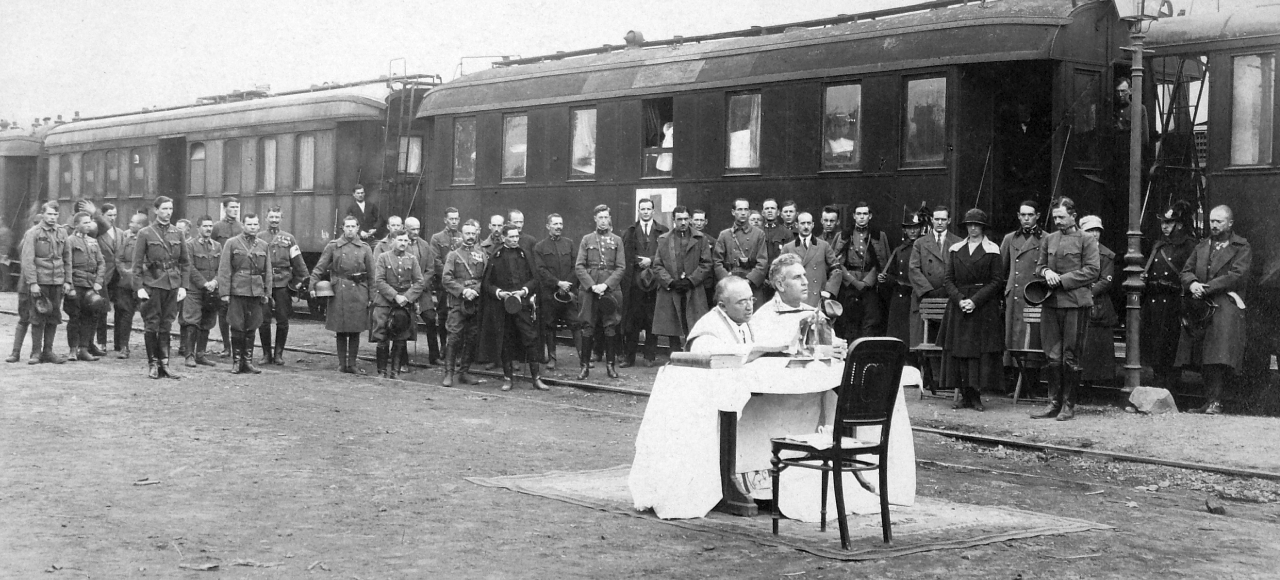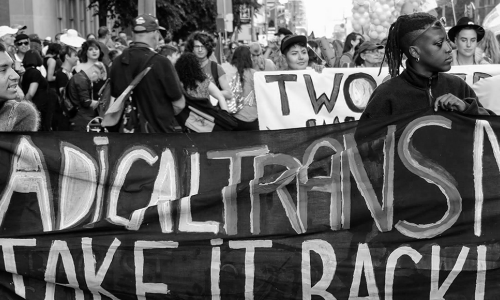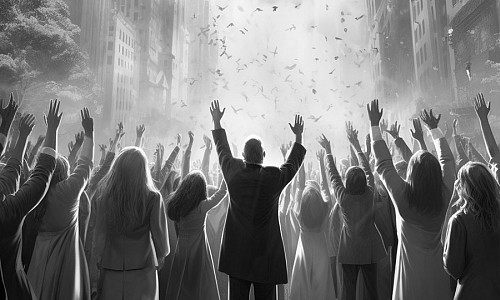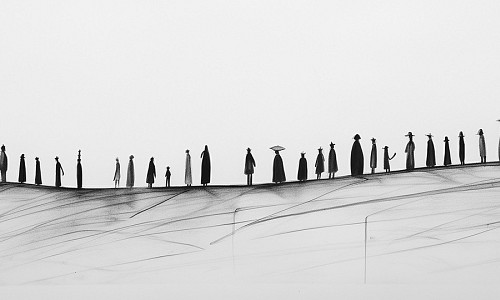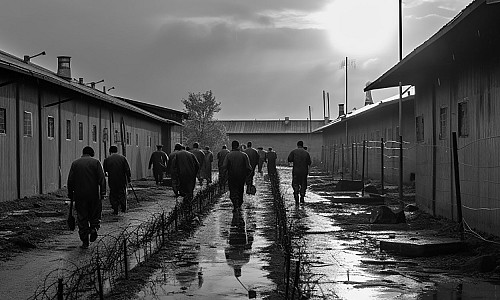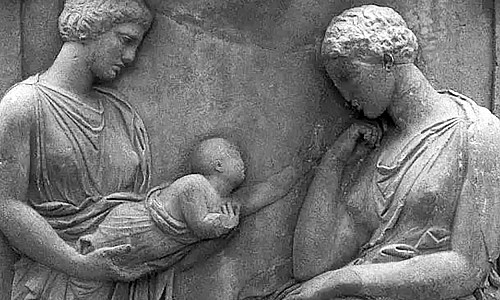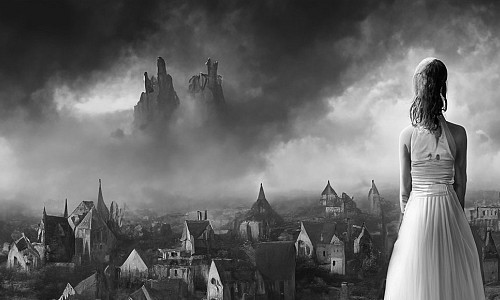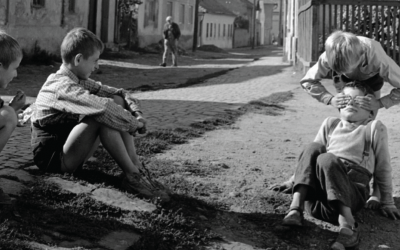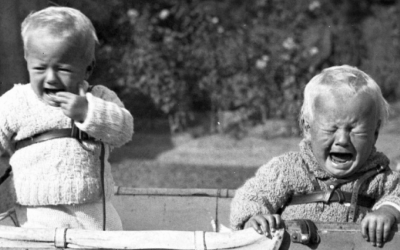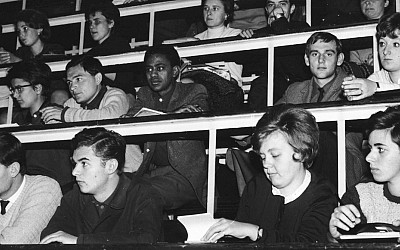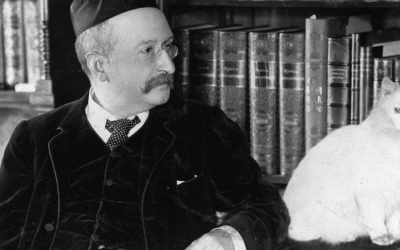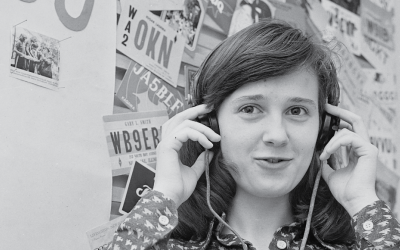Timothy Williamson on philosophical dialogues.
Writing a philosophical dialogue is like competing in a sport where the world record was set at the original Olympic Games in ancient Greece and no one since has even come close. Plato’s dialogues set the gold standard; attempts to do better are liable to end in tears. Indeed, the increasingly specialized and technical nature of philosophical inquiry has made the dialogue form less appropriate as a medium for cutting-edge research than it was in Plato’s day. Nevertheless, for some purposes, the dialogue has powers that the academic monograph or journal article cannot match, as I discovered when writing my last book (Tetralogue: I’m Right, You’re Wrong, Oxford University Press, 2015). I was not aiming at academic philosophers (though they have been reading it), but at anyone who wants to know how philosophy can help us think and argue better about some very general questions implicit in problems of a kind that most people encounter in their everyday lives.
One obvious aspect of a philosophical dialogue is that it personalizes issues. Typically, different characters embody different theories or points of view. But isn’t that a step in the wrong direction? Shouldn’t we be striving for more objectivity, to overcome our personal prejudices? A first answer to that question is that presenting philosophy in too impersonal and distant a manner can make it seem very dry and dusty, irrelevant to the reader’s individual concerns and worries. One learns, for example, that there was something called “the problem of universals” and that three theories about it are called “realism”, “conceptualism”, and “nominalism”. Who cares? Who can even remember which is which? It is better to meet a realist, a conceptualist, and a nominalist, to hear them arguing with each other, and get a feel for what is driving each of them, what puzzles them, what they find satisfying. One is much less likely to muddle them up if each has a name, a gender, and a bit of personality; one may even imagine a face and clothes. One finds them sympathetic or annoying. One starts to care about who will win the argument, who will lose. Each move in the dialogue has the potential to make one hope or fear. Does that sound like confusing the philosophical issues by mixing them up with irrelevant and distracting personal prejudices and emotions? It doesn’t have to be that. In a philosophical dialogue, most of what there is on the page to provoke the reader’s feelings is just what each character says. One typically likes or dislikes the characters because one likes or dislikes what they say, rather than the other way round. One can’t learn much philosophy without preferring some philosophical theories to others. For otherwise one has no instinct which direction to go in, no motivation to go there. Not even the most scientific inquiry banishes human emotions; instead, it harnesses their power to drive the inquiry forward.
Of course, once one is personally involved on one side of the debate or the other, it is only human to bias one’s judgment about the relative strength of the arguments to favor one’s own side. We need to develop forms of inquiry that keep such natural tendencies towards wishful thinking in check. Scientific experimentation, mathematical proof, and historical scholarship all involve their own elaborate controls of such a kind. The dialogue form is looser in that way, but it does embody a self-correcting mechanism of its own. Its very structure makes it give voice to alternative points of view. Although the author can make the characters who speak for disfavored theories slow-witted stooges, the result will be a loss of dramatic tension in the dialogue. Who wants to watch a tennis match between Roger Federer in his prime and an untalented amateur? It will not even properly demonstrate Federer’s skills. Similarly, to demonstrate the full strength of one’s favorite theory in a dialogue, one has to show what it can do when confronted with strong, plausible objections, not just with weak, implausible ones. Too one-sided a dialogue is unconvincing, because it reads as though the author is not giving the opposition its best shot. That is not to say that the dialogue form forces the author to be perfectly even-handed; Plato’s Socrates is not always faced with the brightest opponents. In George Berkeley’s dialogues it quickly becomes clear who is meant to have the right view, who the wrong one. David Hume’s Dialogues concerning Natural Religion do better in disguising the author’s sympathies, perhaps because Hume was an atheist in an age when atheism was socially unacceptable. But subtle kinds of bias can creep into scientific experimentation and historical scholarship too. Anyway, in reading a philosophical dialogue, it is worth remembering that although it has several characters, it has only one author.
The dialogue form is especially well suited to philosophy, as contrasted with other subjects, because so much testing of philosophical ideas happens through the medium of discussion. For instance, after a lecture by one philosopher to others, the question-and-answer period is typically as long as the lecture itself, and often far more interesting. The audience presents objections that may go to the heart of the speaker’s view; their judgment of that view may depend in large part on his or her ability to respond effectively. By contrast, in other disciplines the question-and-answer period tends to be shorter and less important. Although all disciplines involve some testing of ideas in discussion, such testing is even more central to the practice of philosophy than elsewhere. The dialogue is especially close to the way philosophy develops. Reading a dialogue can give one a better feel for what it is like to do philosophy than one would get for what it is like to do mathematics or biology or history: in the case of philosophy, less of what matters is happening offstage.
A realistic dialogue between professional philosophers would not be much fun for most readers. The academics would start far too far into the subject, taking for granted and not bothering to explain the meaning of their technical terms, the interest of their questions, and the abstruse common knowledge behind their answers. For the initiated, such esoteric dialogue is vital and natural, because it gets to the point quickly and effectively; for the uninitiated, it is baffling and suspect. Tetralogue opens with two non-philosophers meeting by chance on a train. One of them, Bob, has been injured by the collapse of his garden wall. They get into an argument about what caused the collapse. The other, Sarah, is sure that it must have a scientific explanation; Bob insists that the real cause was his neighbor’s witchcraft. An everyday accident (or was it?) reveals a deep clash in worldviews, between traditional magic and modern science. In arguing about which of them is right, they are already doing philosophy. Full disclosure: the incident was inspired by the collapse of my own garden wall (fortunately injuring no one), but also by the reasonable and resourceful defense the Azande of Central Africa gave of their claim that it was witchcraft that caused a granary to collapse on someone (as described by the social anthropologist Edward Evans-Pritchard in his classic work Witchcraft, Oracles and Magic Among the Azande). They readily conceded that termites had been eating away its supports, but demanded: what but witchcraft could explain why it collapsed exactly when someone was there?
I’m sometimes asked why I chose to contrast belief in modern science with belief in witchcraft, which is not a live option for most of my readers. Of course, many people in the world still do believe in witchcraft, and it is good to be reminded that assumptions we take for granted are denied by other human beings. Such differences in point of view are amongst the deepest and philosophically most challenging we encounter. But I also had another reason for using an alternative to modern science that might make the choice look like a no-brainer. I didn’t want readers to become so engaged with the first-order dispute, for and against modern science, that they would be unable to refocus on a second-order dispute about the very nature of the first-order dispute.
What happens is this. The dialogue between Bob and Sarah, witchcraft and science, becomes deadlocked. Neither of them can persuade the other, though each of them gives arguments they think ought to persuade the other. Each of them always finds a comeback to the other’s arguments, though not one that convinces the other. Each is reduced to saying “I’m right, you’re wrong,” knowing that the other may utter the very same words (hence the book’s subtitle). At this point a stranger, Zac, intervenes. He’s a relativist. He rejects the assumption, which Bob and Sarah share, that one of them is really right and the other really wrong. According to Zac, each of them is right from their own point of view, wrong from the other’s, and that’s it: there’s nothing deeper to be said, no absolute truth of the matter. For Zac, dividing beliefs into true and false leads to intolerance and persecution: it presupposes a God’s eye point of view to which no human is entitled. Zac casts himself in the role of peacemaker, but (as in politics) peacemakers may have their own agenda and are not always welcomed by either side. Zac’s point of view also faces the threat of self-defeat: can he consistently be relativist about his own relativism? Later, another stranger, Roxana, joins the conversation (the book is called “Tetralogue” because it’s a dialogue between four characters). She defends absolutism about truth and falsity. Roxana is more of a logician than the others; she also has more of the coldness associated with logic, and of the intolerance of the rough, imprecise ways of thinking that come naturally to human beings. So it’s a dialogue on truth and falsity, right and wrong, certainty and fallibility, and the relations between them, both in general and as applied to specific areas of discourse, from morality to etiquette. The dialogue form enables one to follow the first-order dispute between Bob and Sarah, and to see how the deadlock it gets into generates the second-order dispute between Zac and Roxana about what is going on between Bob and Sarah. But the two levels of dispute aren’t neatly separated, because Bob and Sarah have plenty to say to Zac and Roxana in response to what Zac and Roxana say about and to them.
Why set the dialogue on a train? It’s a natural place for strangers to be put into proximity with each other, in circumstances that allow a conversation to continue for several hours. On planes one usually sits next to strangers, but the seating arrangements don’t facilitate a conversation between four people. It helps to use strangers, because they are more likely to introduce the others to new ideas, and they have to do more explaining since they can take less for granted. Moreover, the conversation won’t be taken up with family bickering, gossip about mutual acquaintances, and the like, so more general topics have a better chance. Obviously, those are not the only possible topics: in Alfred Hitchcock’s Strangers on a Train (based on a novel by Patricia Highsmith), the strangers discuss swapping murders, “crisscross”. But philosophy has a chance too – though I must admit that I myself am quite successful at avoiding conversation with strangers on a train. My characters are less reticent.
Once you have started writing a philosophical dialogue, it’s not so hard to continue, because as soon as you have made one character say something, you just have to put yourself in the others’ shoes and imagine what you’d say in response. But some shaping is required, otherwise the result would have too much the rambling quality of real conversation, sometimes repetitive, sometimes digressive.
At the level of the underlying arguments, one might compare writing a philosophical dialogue to playing chess against yourself. But that analogy is misleading in several ways. In chess, white and black have equal numbers of pieces of each type, with the same powers. By contrast, philosophical theories differ from each other in structure and intellectual resources. It is like a variant of chess where one side has bishops but no knights, the other knights but no bishops. Moreover, chess is so formal that it is almost always clear which moves are legal, which illegal. Philosophy is less formal; theories can also differ from each other over which moves they deem legal, which arguments fair. It is like chess without an agreed rulebook. Inevitably, the players sometimes get drawn into arguments about the legality of their moves. Those arguments are all part of the same game. In philosophy, there is no neutral umpire whose rulings all sides are obliged to accept.
Without an authoritative neutral viewpoint, it can be difficult even to report a philosophical dispute without taking on serious philosophical commitments. For instance, some philosophers theorize about unobservable aspects of reality (such as numbers), while others claim that one can talk meaningfully only about what can be observed. Even if you just try to express the first side’s theories, you will succeed only by doing what the other side claims to be impossible. I have found myself facing such dilemmas even in technical areas of logic, for example in discussing whether one can meaningfully talk in one breath about absolutely everything. If “absolutely everything” is meaningless, as some philosophers hold, isn’t the dispute itself meaningless? The best solution I could find was in effect to write a short philosophical dialogue, letting each side speak for itself, with no voice pretending to be that of a neutral umpire. The philosophical dialogue is not dead even as a medium for carrying philosophical research forward, as opposed to communicating its results.
Another effect of the absence of an umpire is that it is difficult to bring philosophical disputes to an end. Unlike the victim of a knockout in boxing, a philosopher can always keep talking, however badly he (or she) is doing in the argument. At worst, like the knight in Monty Python and the Holy Grail whose arms and legs are cut off in single combat, he can claim that it is only a flesh wound. Philosophical dialogues that end with one side admitting that they were wrong are peculiarly unrealistic. In Tetralogue, none of the characters abandons his or her core beliefs, although Sarah the scientist frequently revises aspects of her view. That does not mean that nobody’s core beliefs are refuted, for one can be refuted without admitting the fact, to others or even to oneself. But the reader is left to judge what has been refuted, and by whom.
I am not suggesting that philosophers are more obstinate than others. Even in the natural sciences, proponents of a theory often cling on to it as the evidence against it mounts. The theory may disappear from the scene only when its last proponents die, having failed to recruit younger scientists to succeed them. In the long run, such obstinacy can even be beneficial, because it helps ensure that theories are given a proper run for their money, rather than being prematurely abandoned in the face of difficulties that could be overcome with patience and ingenuity. Otherwise, we risk abandoning true theories. But if the difficulties mount, with no signs of progress in overcoming them, young scientists become increasingly reluctant to invest their careers in what looks more and more like a failing research program. They join more promising research teams instead. Such mechanisms operate in philosophy too, albeit in less institutionalized ways, since philosophy is not organized into research teams and laboratories as the natural sciences are. In less formal ways, research programs compete for followers and other scarce resources in philosophy too.
The word “dialogue” is often used to suggest a constructive, cooperative process. Yet I have compared philosophical dialogues to tennis, chess, boxing, and mortal combat, and described their participants as mutually antagonistic rivals on opposite sides. Does philosophy really have to be such a competitive activity? Shouldn’t philosophers cooperate with each other instead? The contrary impression is partly an artefact of the dialogue form. To achieve simplicity, authors normally assign each viewpoint just one representative, so cooperation between those with similar views is not represented. Moreover, dramatic tension demands conflict. A story of unbroken peaceful collaboration sounds boring. But there is more to it than just the demands of the dialogue form. The price of universal agreement is intellectual stagnation and dogmatism. Assumptions need to be criticized, alternatives considered. Genuine alternatives are inconsistent with what they are alternatives to; logically as well as dramatically they are rivals. Radically new ideas tend to sound crazy when first proposed. Without committed defenders, they will probably be dismissed and forgotten. The competition between ideas is embodied in the competition between their proponents.
Any healthy intellectual discipline involves rivalry and conflict. But that is compatible with all the participants being engaged in a joint cooperative enterprise. Think again of sports and games. It would be a disaster for the world number one in tennis if all the other players dropped out of the sport in despair, for then no one would be left to play. A chess club is a collaboration between its members, even though they play each other to win. In that respect philosophy is similar, although with a more serious purpose. To do philosophy is to participate in a huge cooperative search for understanding that goes back thousands of years. Philosophical dialogues dramatize that cooperation. But, as philosophers know, sometimes one can contribute most to the collaboration through grim defence of one’s own view and sharp, uncompromising criticism of its rivals. In the long run, the result may be a new theory better than all those now available.
Timothy Williamson is Wykeham Professor Of Logic at Oxford. He is the author of many books and articles, including Tetralogue: I'm Right, You're Wrong.
You might also like...
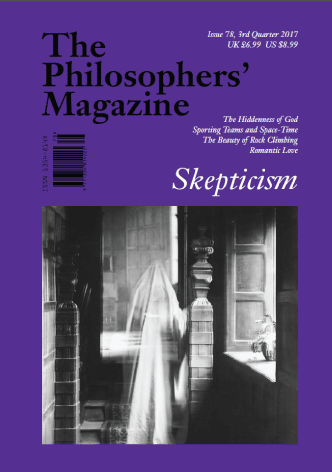
Subscribe to The Philosophers' Magazine for exclusive content and access to 20 years of back issues.

